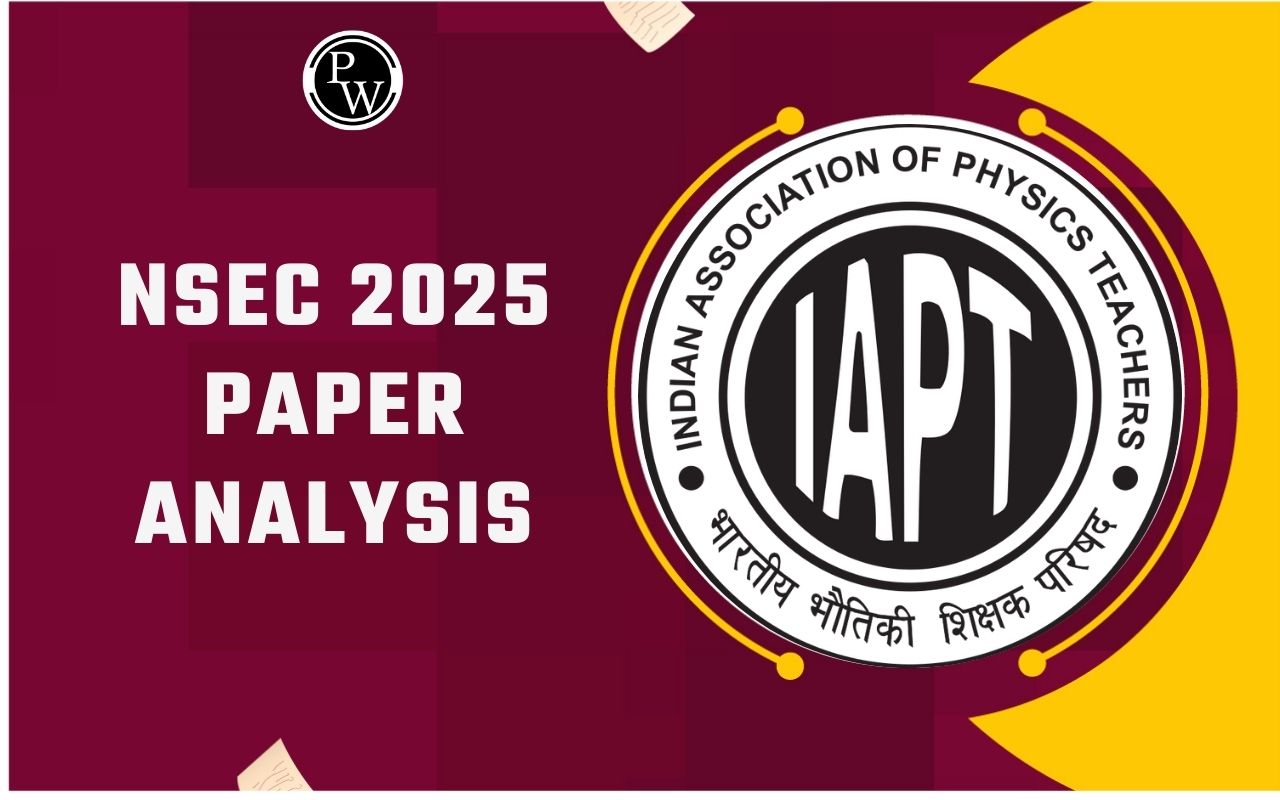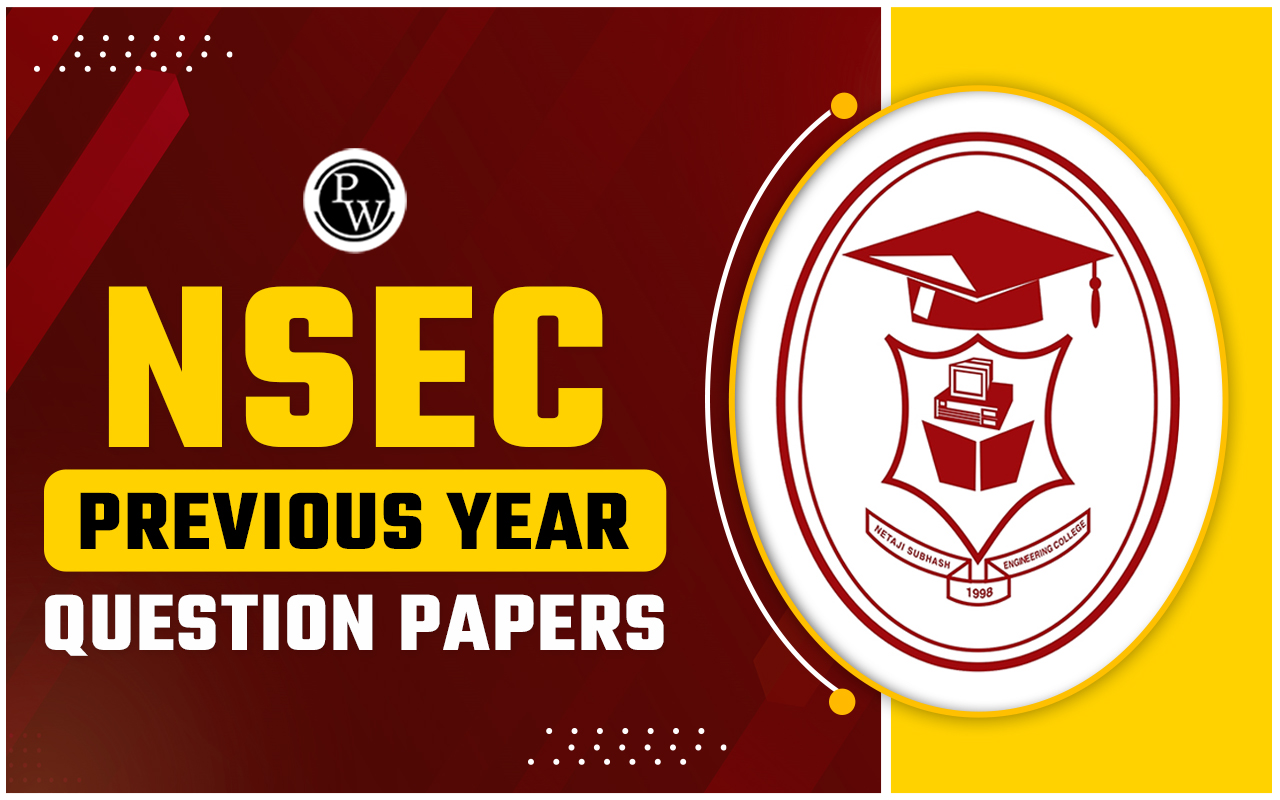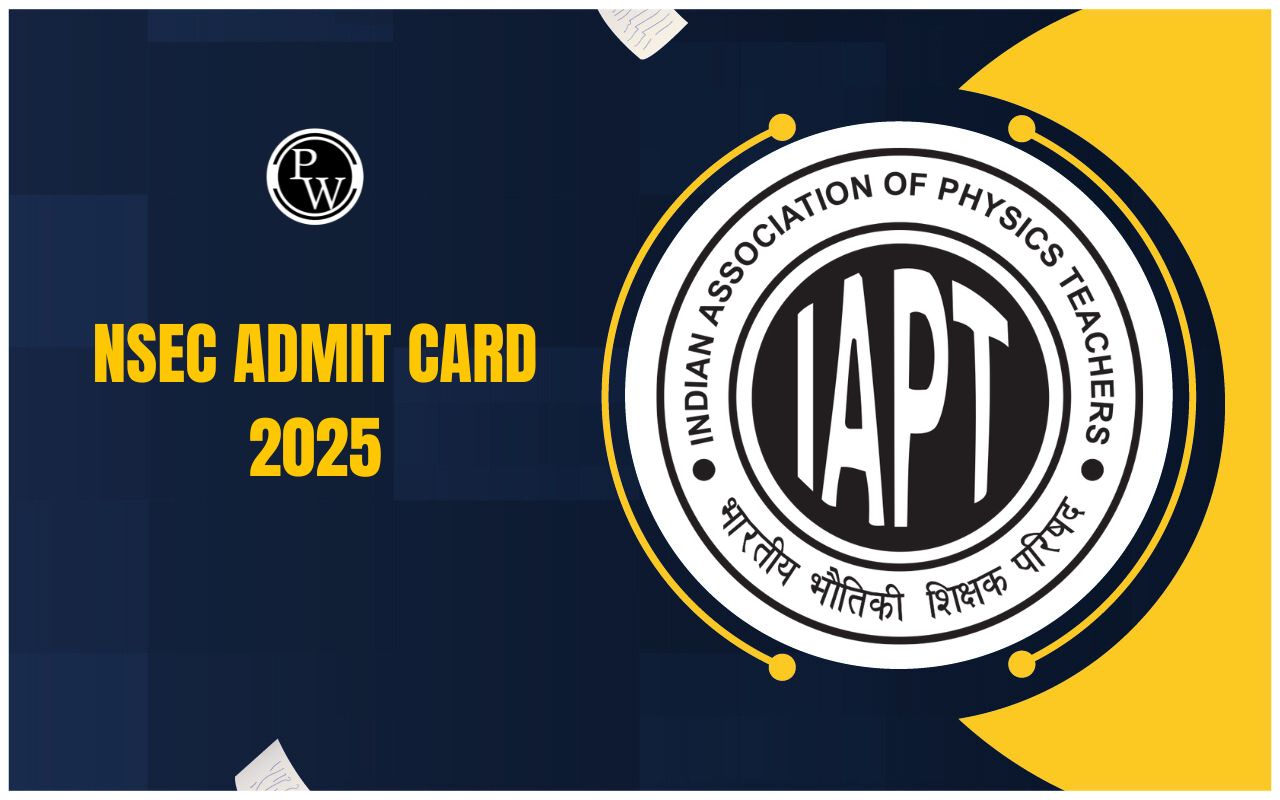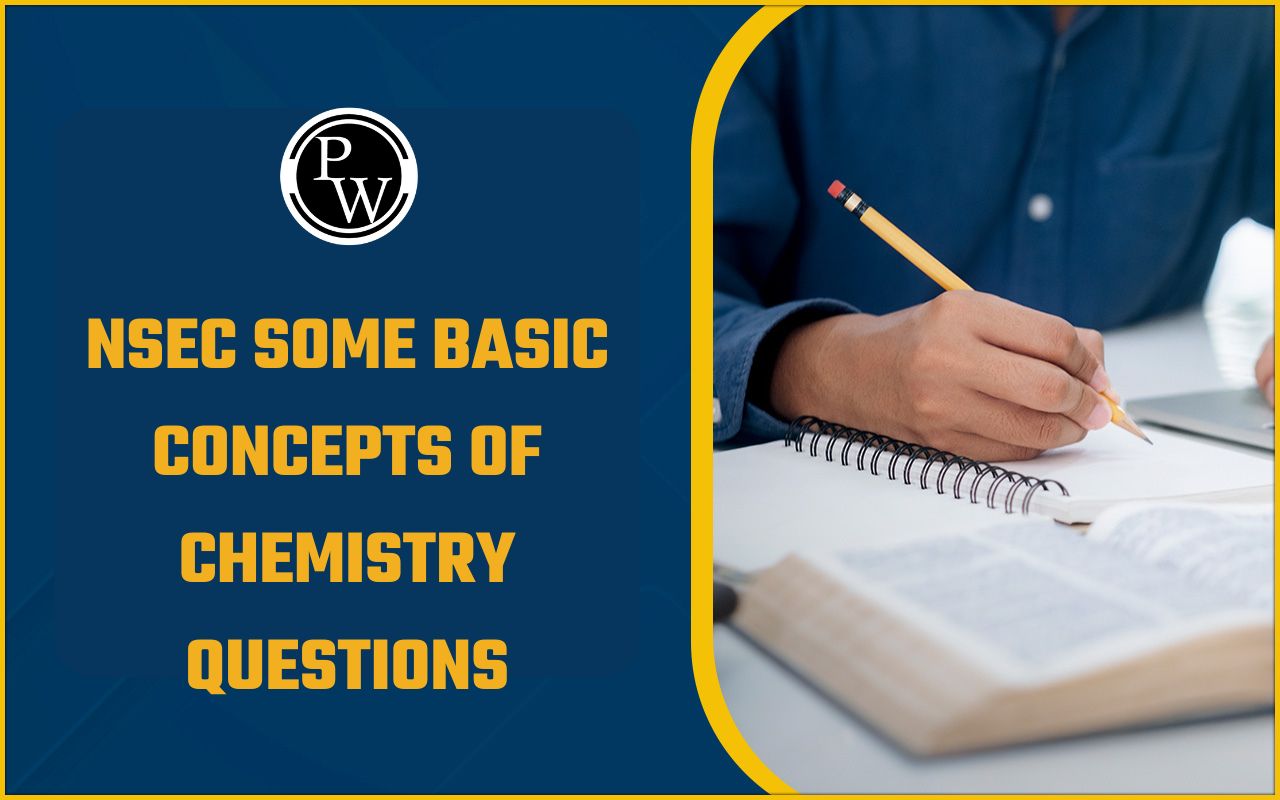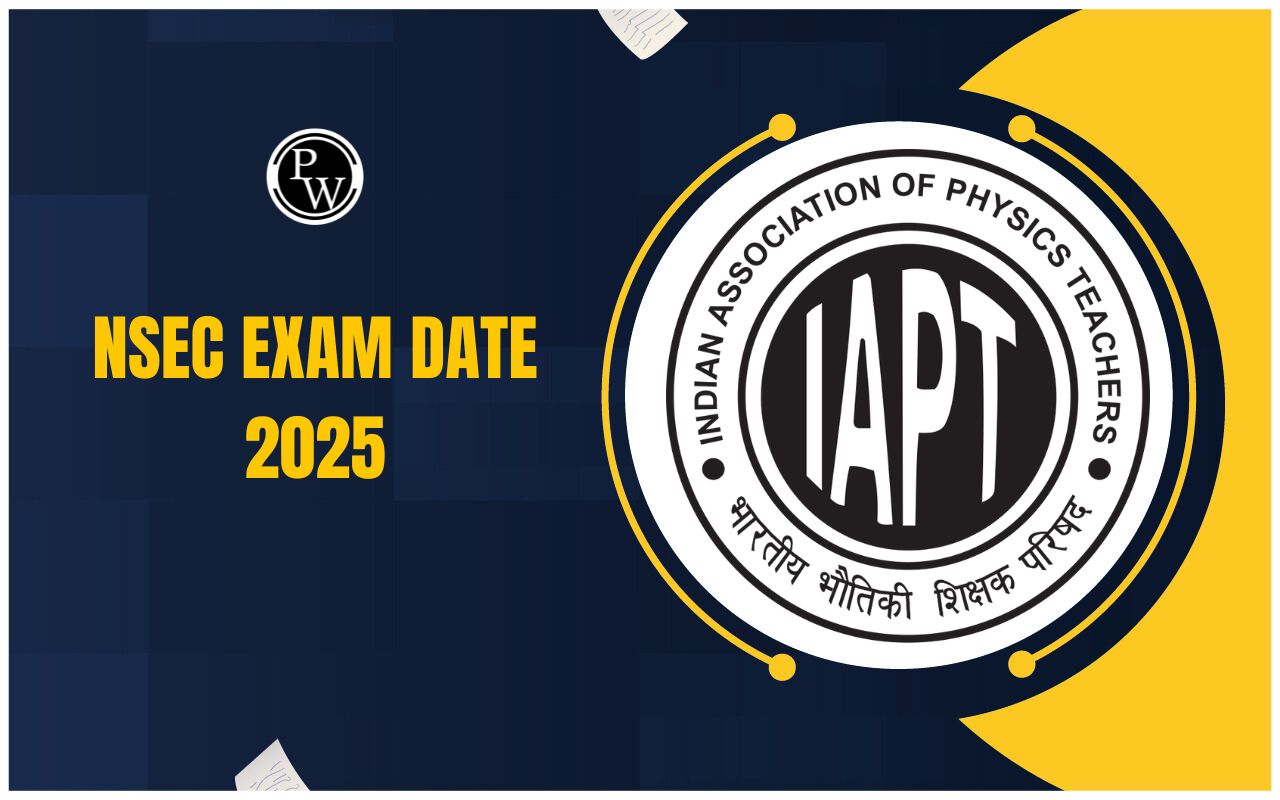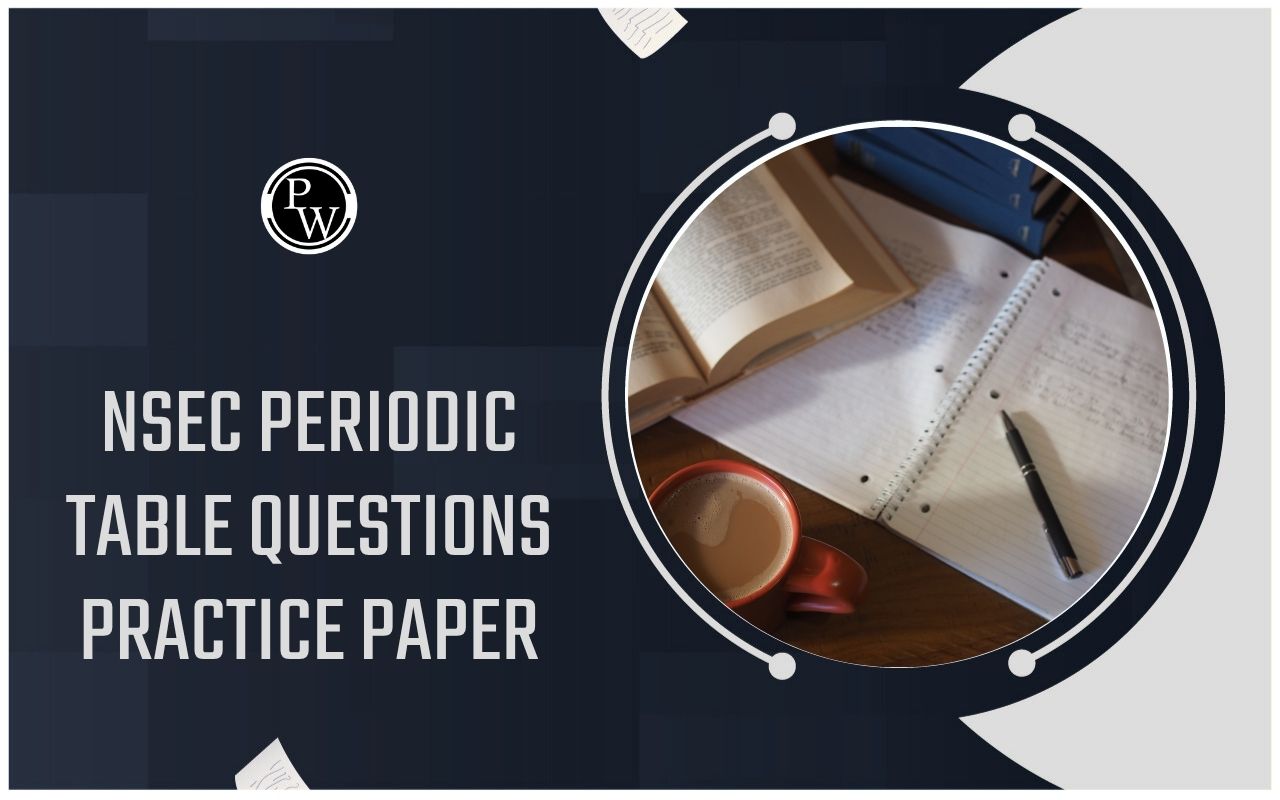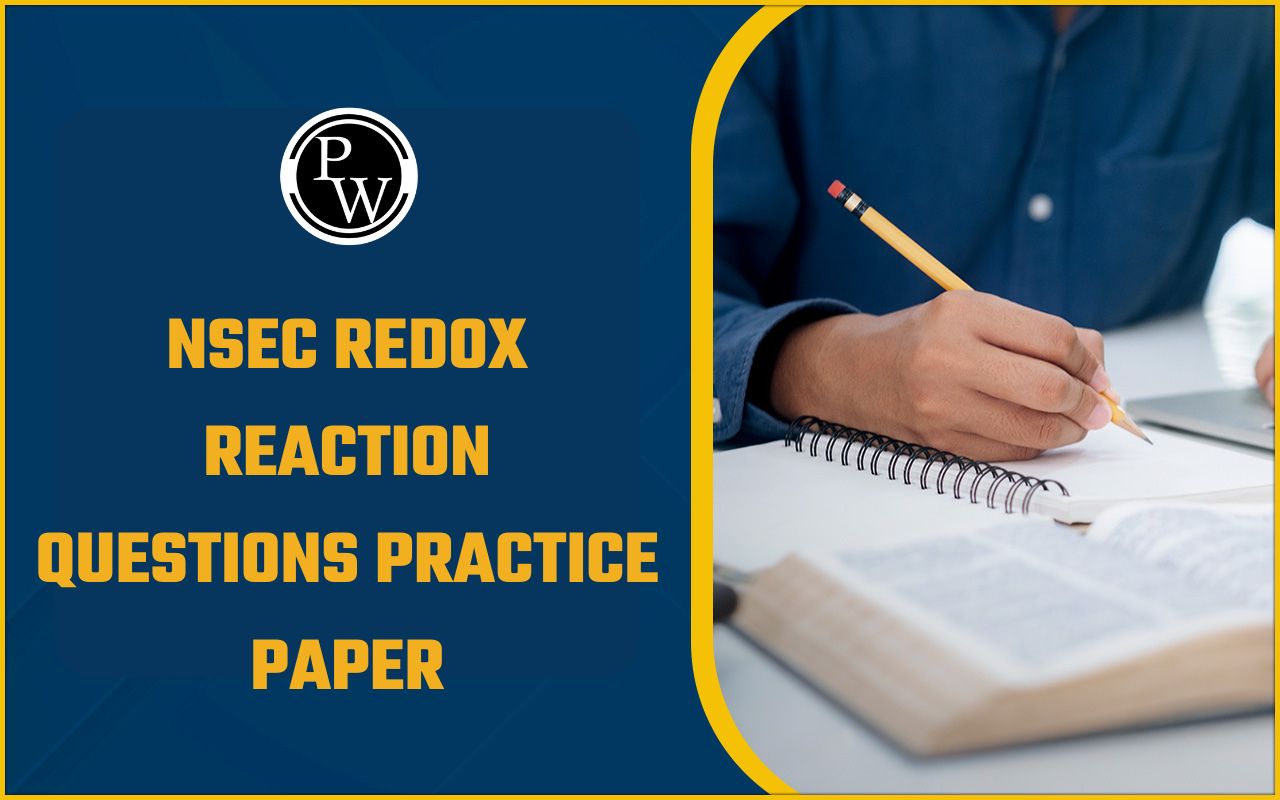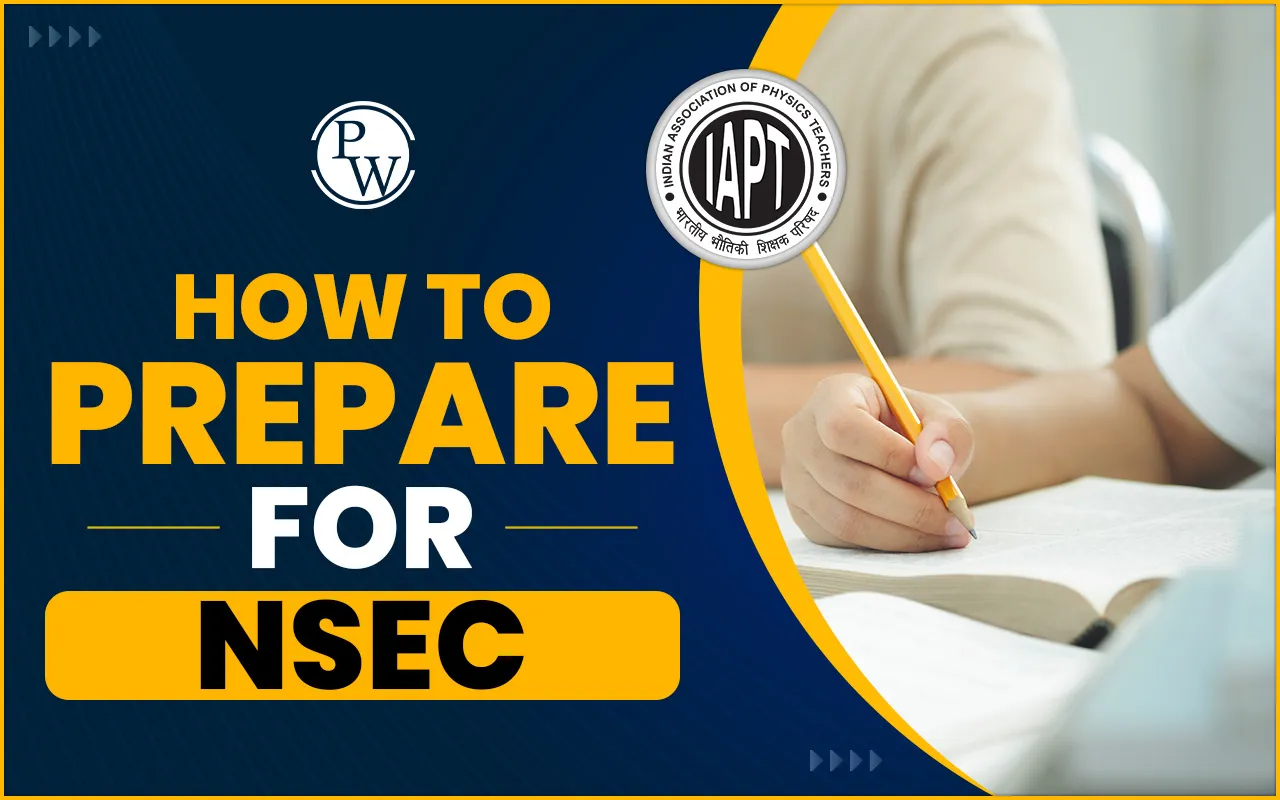
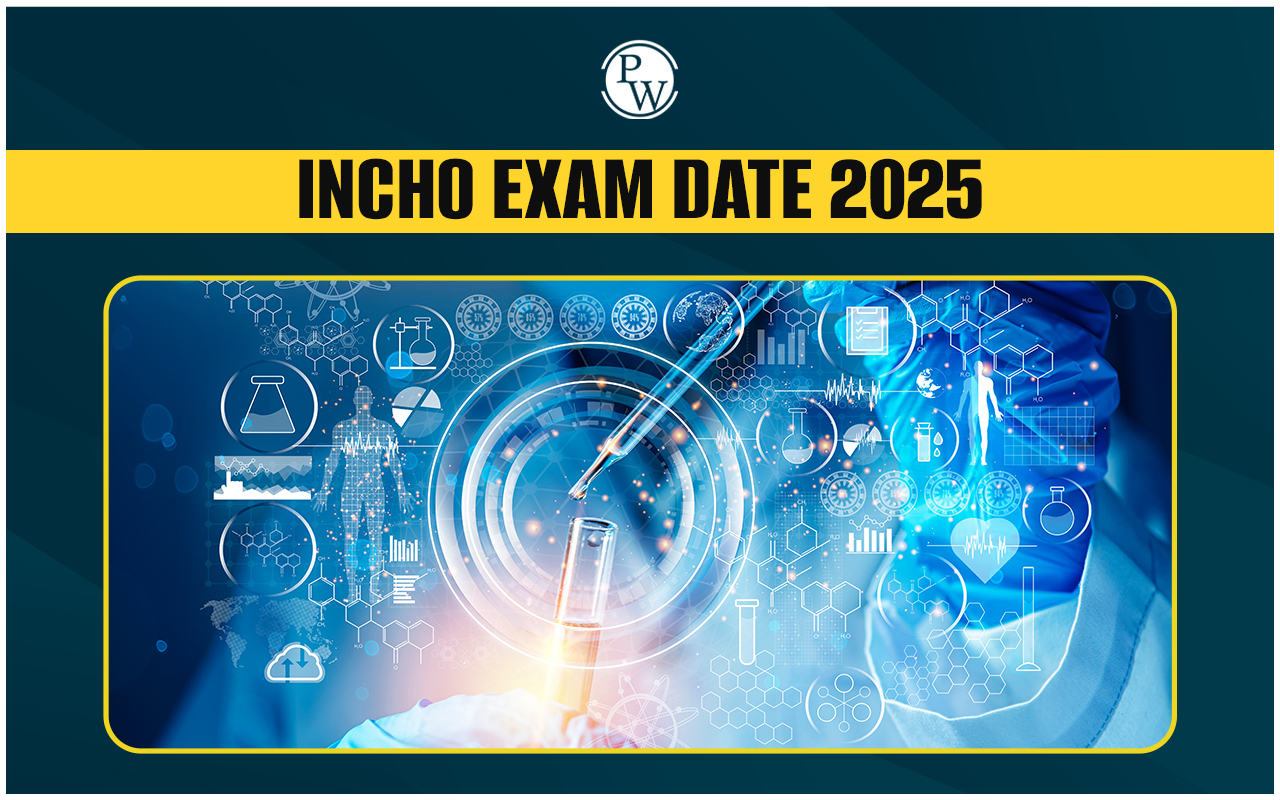
INChO Exam Date 2025 : Homi Bhabha Centre for Science Education (affiliated with the Tata Institute of Fundamental Research – HBCSE) has announced the INChO Exam Date 2025 for the candidates who qualified for the NSEC Exam 2024. INChO stands for Indian National Chemistry Olympiad is a prestigious competition designed to encourage students to excel in Chemistry.
As per details available on the on the official website https://secure.hbcse.tifr.res.in INChO Exam 2025 is scheduled to take place on 01st February 2025 (Saturday) 01:30 pm to 4:30 pm.
It aims to identify and develop talents in the field of chemistry by providing a platform for students to showcase their knowledge and skills. INChO is organized nationally, and successful participants can represent India in the Chemistry Olympiad.INChO Exam Date 2025
The Indian National Chemistry Olympiad (INChO) is the second stage in the selection process for the International Chemistry Olympiad (IChO) , After INChO, selected students attend the Orientation-cum-Selection Camp (OCSC) in Chemistry. Following OCSC, the top-performing students are shortlisted to undergo the Pre-Departure Training (PDT) for the International Chemistry Olympiad. The list of students selected for the INOs according to the criteria given below will be published by January 15, 2025 on the IAPT website: www.iapt.org.in All students appearing in INOs must register themselves on the HBCSE website (olympiads.hbcse.tifr.res.in) after the publication of the list in order to obtain their INChO admit cards. This registration is mandatory for appearing in INO. Failure to register for INChO will result in disqualification of the candidate for INChO. INChO Exam Date 2025 has been declared and students must not wait instead they should start preparing for the INChO Examination as this is a great way to assess how much you’ve learned and how effectively you’ve applied that knowledge.INChO Exam Date 2025 Overview
INChO is conducted in two parts: theory test and practical test, but the answer booklet of Part-II will be evaluated only if you’ve qualified Part-I. Students will be given answer sheets and worksheets to complete the questions in the INChO Examination. Each question requires writing detailed proof. Here we have provided the essential details of the INChO Exam Date 2025 for the students who are willing to appear for the exam.| INChO Exam Date 2025 | |
| Organization | Homi Bhabha Centre for Science Education (affiliated with the Tata Institute of Fundamental Research – HBCSE) |
| Exam Name | Indian National Chemistry Olympiad (INChO 2025) |
| INChO Exam Date 2025 | 01st February 2025 |
| Mode of Exam | Online |
| Type of Questions | 60 Multiple Choice Questions (MCQs) |
| Total Marks | 216 |
| Negative Marking | For each wrong response, there will be negative marking. |
| Official Website | https://secure.hbcse.tifr.res.in |
INChO 2025 Exam Pattern
- INChO Exam: The INChO Exam is Theoretical exam and total marks for the online exam is 216, consists of 60 multiple-choice questions. The exam is two hours long and has two parts
- INChO Exam Pattern: The Exam Pattern consists of multiple choice questions (MCQ). Participants are tested on a variety of chemistry topics, including Inorganic Chemistry, Organic Chemistry, Physical Chemistry, Biochemistry, Experimental Part of INChO.
- Practical Test: The Practical Test assesses students' knowledge and practical skills in chemistry. Participants are tasked with experimenting, analyzing data and drawing conclusions based on their findings.
- Duration: The duration of the theory and practical test will be intimated to the participants before the date of the test.
- Syllabus : INChO Syllabus is based on the syllabus prescribed for class 11 and 12 by the official education boards in India like CBSE, ICSE and state boards.
- Score : Each question carries multiple marks and wrong answers may carry negative marks. Candidates are advised to read the instructions carefully before attempting the questions.
INChO Syllabus 2025
The students should start with the core subjects of class 7 to 10 in order to gain deep experience and understanding. The INChO Syllabus is broadly equivalent to NSEC. To strengthen the fundamentals, one should be well versed with school study materials from class 11 and 12, including NCERT.| INChO Syllabus 2024-25 | |
| I. Some Basic Concepts of Chemistry |
|
|---|---|
| II. Structure of Atom | Bohr’s model and its limitations, concept of shells and subshells, dual nature of matter and light, de Broglie’s relationship, Heisenberg uncertainty principle, concept of orbitals, quantum numbers, shapes of s, p and d orbitals, rules for filling electrons in orbitals – Aufbau principle, Pauli’s exclusion principle and Hund’s rule, electronic configuration of atoms, stability of half-filled and completely filled orbitals. |
| III. Classification of Elements and Periodicity in Properties | Modern periodic law and the present form of periodic table, periodic trends in properties of elements -atomic radii, ionic radii, inert gas radii, Ionization enthalpy, electron gain enthalpy, electronegativity, valency. Nomenclature of elements with atomic number greater than 100 |
| IV. Chemical Bonding and Molecular structure | Valence electrons, ionic bond, covalent bond, bond parameters, Lewis structure, polar character of covalent bond, covalent character of ionic bond, valence bond theory, resonance, geometry of covalent molecules, VSEPR theory, concept of hybridization, involving s, p and d orbitals and shapes of some simple molecules, molecular orbital theory of homonuclear diatomic molecules (qualitative idea only), hydrogen bond. |
| V. States of Matter: Gases and Liquids | Three states of matter, intermolecular interactions, types of bonding, melting and boiling points, role of gas laws in elucidating the concept of the molecule, Boyle’s law, Charles law, Gay Lussac’s law, Avogadro’s law, ideal behaviour, empirical derivation of gas equation, Avogadro’s number, ideal gas equation. Deviation from ideal behaviour, liquefaction of gases, critical temperature, kinetic energy and molecular speeds (elementary idea) Liquid State: vapour pressure, viscosity and surface tension (qualitative idea only, no mathematical derivations) |
| VI. States of Matter: Solid State | Classification of solids based on different binding forces: molecular, ionic, covalent and metallic solids, amorphous and crystalline solids (elementary idea). Unit cell in two dimensional and three dimensional lattices, calculation of density of unit cell, packing in solids, packing efficiency, voids, number of atoms per unit cell in a cubic unit cell, point defects. |
| VII. Chemical Thermodynamics | Concepts of System and types of systems, surroundings, work, heat, energy, extensive and intensive properties, state functions. First law of thermodynamics -internal energy and enthalpy, heat capacity and specific heat, measurement of ∆U and ∆H, Hess’s law of constant heat summation, enthalpy of bond dissociation, combustion, formation, atomization, sublimation, phase transition, ionization, solution and dilution. Second law of Thermodynamics (brief introduction).Introduction of entropy as a state function, Gibb’s energy change for spontaneous and non- spontaneous processes, criteria for equilibrium. Third law of thermodynamics (brief introduction). |
| VIII. Equilibrium | Equilibrium in physical and chemical processes, dynamic nature of equilibrium, law of mass action, equilibrium constant, factors affecting equilibrium- Le Chatelier’s principle, ionic equilibrium- ionization of acids and bases, strong and weak electrolytes, degree of ionization, ionization of poly basic acids, acid strength, concept of pH, Henderson Equation, hydrolysis of salts (elementary idea), buffer solution, solubility product, common ion effect (with illustrative examples) |
| IX. Solutions | Types of solutions, expression of concentration of solutions of solids in liquids, solubility of gases in liquids, solid solutions, colligative properties – relative lowering of vapour pressure, Raoult’s law, elevation of boiling point, depression of freezing point, osmotic pressure, determination of molecular masses using colligative properties, abnormal molecular mass, Van’t Hoff factor. |
|
X. Electrochemistry
|
Redox reactions: Concept of oxidation and reduction, oxidation number, balancing redox reactions, in terms of loss and gain of electrons and change in oxidation number, applications of redox reactions. conductance in electrolytic solutions, specific and molar conductivity, variations of conductivity with concentration, Kohlrausch’s Law, electrolysis and law of electrolysis (elementary idea), dry cell-electrolytic cells and Galvanic cells, lead accumulator, EMF of a cell, standard electrode potential, Nernst equation and its application to chemical cells, Relation between Gibbs energy change and EMF of a cell, fuel cells, corrosion. |
| XI. Chemical Kinetics | Rate of a reaction (Average and instantaneous), factors affecting rate of reaction: concentration, temperature, catalyst; order and molecularity of a reaction, rate law and specific rate constant, integrated rate equations and half-life (only for zero and first order reactions), concept of collision theory (elementary idea, no mathematical treatment). Activation energy, Arrhenius equation. |
| XII. Surface Chemistry | Adsorption – physisorption and chemisorption, factors affecting adsorption of gases on solids, catalysis, homogenous and heterogenous activity and selectivity; enzyme catalysis colloidal state distinction between true solutions, colloids and suspension; lyophilic, lyophobic multi-molecular and macromolecular colloids; properties of colloids; Tyndall effect, Brownian movement, electrophoresis, coagulation, emulsion – types of emulsions. |
| XIII. s-Block Elements (Alkali and Alkaline Earth Metals) | Position of hydrogen in periodic table, occurrence, isotopes, preparation, properties and uses of hydrogen, hydrides-ionic covalent and interstitial; physical and chemical properties of water, heavy water, hydrogen peroxide – preparation, reactions and structure and use; hydrogen as a fuel. Group 1 and Group 2 Elements General introduction, electronic configuration, occurrence, anomalous properties of the first element of each group, diagonal relationship, trends in the variation of properties (such as ionization enthalpy, atomic and ionic radii), trends in chemical reactivity with oxygen, water, hydrogen and halogens, uses. Preparation and properties of some important compounds: Sodium Carbonate, Sodium Chloride, Sodium Hydroxide and Sodium Hydrogencarbonate, Biological importance of Sodium and Potassium. Calcium Oxide and Calcium Carbonate and their industrial uses, biological importance of Magnesium and Calcium. |
|
XIV. p -Block Elements
|
General Introduction to p -Block Elements Group 13 Elements: General introduction, electronic configuration, occurrence, variation of properties, oxidation states, trends in chemical reactivity, anomalous properties of first element of the group, Boron – physical and chemical properties, some important compounds, Borax, Boric acid, Boron Hydrides, Aluminium: Reactions with acids and alkalies, uses. Group 14 Elements: General introduction, electronic configuration, occurrence, variation of properties, oxidation states, trends in chemical reactivity, anomalous behaviour of first elements. Carbon-catenation, allotropic forms, physical and chemical properties; uses of some important compounds: oxides. Important compounds of Silicon and a few uses: Silicon Tetrachloride, Silicones, Silicates and Zeolites, their uses. Group -15 Elements: General introduction, electronic configuration, occurrence, oxidation states, trends in physical and chemical properties; Nitrogen preparation properties and uses; compounds of Nitrogen: preparation and properties of Ammonia and Nitric Acid. Group 16 Elements: General introduction, electronic configuration, oxidation states, occurrence, trends in physical and chemical properties, dioxygen: Preparation, Properties and uses, classification of Oxides, Ozone, Sulphur -allotropic forms; compounds of Sulphur: Preparation Properties and uses of Sulphur-dioxide, Sulphuric Acid: industrial process of manufacture, properties and uses; Oxoacids of Sulphur (Structures only). Group 17 Elements: General introduction, electronic configuration, oxidation states, occurrence, trends in physical and chemical properties; compounds of halogens, Preparation, properties and uses of Chlorine and Hydrochloric acid, interhalogen compounds, Oxoacids of halogens (structures only). Group 18 Elements: General introduction, electronic configuration, occurrence, trends in physical and chemical properties, uses. |
| XV. ‘d’ and ‘f’ Block Elements | General introduction, electronic configuration, occurrence and characteristics of transition metals, general trends in properties of the first row transition metals – metallic character, ionization enthalpy, oxidation states, ionic radii, colour, catalytic property, magnetic properties, interstitial compounds, alloy formation, preparation and properties of K2Cr2O7 and KMnO4. Lanthanoids – Electronic configuration, oxidation states, chemical reactivity and lanthanoid contraction and its consequences. Actinoids – Electronic configuration, oxidation states and comparison with lanthanoids. |
| XVI. General Principles and Processes of Isolation of Elements | Principles and methods of extraction – concentration, oxidation, reduction -electrolytic method and refining; occurrence and principles of extraction of aluminium, copper, zinc and iron |
|
XVII. Coordination Compounds
|
Coordination compounds – Introduction, ligands, coordination number, colour, magnetic properties and shapes, IUPAC nomenclature of mononuclear coordination compounds. Bonding, Werner’s theory, VBT, and CFT; structure and stereoisomerism, importance of coordination compounds (in qualitative inclusion, extraction of metals and biological system). |
|
XVIII. Organic Chemistry – Some Basic Principles and Techniques
|
General introduction, methods of purification, qualitative and quantitative analysis, classification and IUPAC nomenclature of organic compounds. Electronic displacements in a covalent bond: inductive effect, electromeric effect, resonance and hyperconjugation. Homolytic and heterolytic fission of a covalent bond: free radicals, carbocations, carbanions, electrophiles and nucleophiles, types of organic reactions. |
|
XIX. Hydrocarbons
|
Classification of Hydrocarbons Aliphatic Hydrocarbons: Alkanes – Nomenclature, isomerism, conformation (ethane only), physical properties, chemical reactions including free radical mechanism of halogenation, combustion and pyrolysis. Alkenes – Nomenclature, structure of double bond (ethene), geometrical isomerism, physical properties, methods of preparation, chemical reactions: addition of hydrogen, halogen, water, hydrogen halides (Markownikov’s addition and peroxide effect), ozonolysis, oxidation, mechanism of electrophilic addition. Alkynes – Nomenclature, structure of triple bond (ethyne), physical properties, methods of preparation, chemical reactions: acidic character of alkynes, addition reaction of – hydrogen, halogens, hydrogen halides and water. Aromatic Hydrocarbons: Introduction, IUPAC nomenclature, benzene: resonance, aromaticity, chemical properties: mechanism of electrophilic substitution. Nitration, sulphonation, halogenation, Friedel Craft’s alkylation and acylation, directive influence of functional group in monosubstituted benzene. Carcinogenicity and toxicity. |
|
XX. Haloalkanes and Haloarenes
|
Haloalkanes: Nomenclature, nature of C-X bond, physical and chemical properties, mechanism of substitution reactions, optical rotation. Haloarenes: Nature of C-X bond, substitution reactions (Directive influence of halogen in monosubstituted compounds only). Uses and environmental effects of – dichloromethane, trichloromethane, tetrachloromethane, iodoform, freons, DDT. |
| XXI. Alcohols, Phenols and Ethers | Alcohols: Nomenclature, methods of preparation, physical and chemical properties (of primary alcohols only), identification of primary, secondary and tertiary alcohols, mechanism of dehydration, uses with special reference to methanol and ethanol. Phenols: Nomenclature, methods of preparation, physical and chemical properties, acidic nature of phenol, electrophilic substitution reactions, uses of phenols. Ethers: Nomenclature, methods of preparation, physical and chemical properties, uses. |
| XXII. Aldehydes, Ketones and Carboxylic Acids | Aldehydes and Ketones: Nomenclature, nature of carbonyl group, methods of preparation, physical and chemical properties, mechanism of nucleophilic addition, reactivity of alpha hydrogen in aldehydes, uses. Carboxylic Acids: Nomenclature, acidic nature, methods of preparation, physical and chemical properties; uses. |
| XXIII. Organic compounds containing Nitrogen | Amines: Nomenclature, classification, structure, methods of preparation, physical and chemical properties, uses, identification of primary, secondary and tertiary amines. Cyanides and Isocyanides – preparation and reactions. Diazonium salts: Preparation, chemical reactions and importance in synthetic organic chemistry. |
|
XXIV. Biomolecules
|
Carbohydrates – Classification (aldoses and ketoses), monosaccharides (glucose and fructose), D-L configuration oligosaccharides (sucrose, lactose, maltose), polysaccharides (starch, cellulose, glycogen); Importance of carbohydrates. Proteins -Elementary idea of – amino acids, peptide bond, polypeptides, proteins, structure of proteins – primary, secondary, tertiary structure and quaternary structures (qualitative idea only), denaturation of proteins; enzymes. Hormones – Elementary idea excluding structure. Vitamins – Classification and functions. Nucleic Acids: DNA and RNA. |
| XXV. Polymers | Copolymerization, some important polymers: natural and synthetic like polythene, nylon, polyesters, bakelite, rubber. Biodegradable and non- biodegradable polymers. |
| XXVI. Environmental Chemistry | Environmental pollution – air, water and soil pollution, chemical reactions in atmosphere, smog, major atmospheric pollutants, acid rain, ozone and its reactions, effects of depletion of ozone layer, greenhouse effect and global warming- pollution due to industrial wastes, green chemistry as an alternative tool for reducing pollution, strategies for control of environmental pollution. |
|
XXVII. Chemistry in Everyday life
|
Chemicals in medicines – analgesics, tranquilizers antiseptics, disinfectants, antimicrobials, antifertility drugs, antibiotics, antacids, antihistamines. Chemicals in food – preservatives, artificial sweetening agents, elementary idea of antioxidants. Cleansing agents- soaps and detergents, cleansing action. |
INChO Admit Card 2025
Every year Homi Bhabha Centre for Science Education (HBCSE) issues the INChO Admit Card 2025 a few days before the exam date. The INChO Hall Ticket 2024 will be available online on the official website of HBCSE at https://secure.hbcse.tifr.res.in. Only the students who qualify for the NSEC Examination 2024-25 are eligible to appear in the INChO exam and only they will get the INChO Admit Card 2024. It is mandatory to carry the hall ticket to exam premises without which no one is allowed enter the examination hall.INChO Previous Year Question Paper
INChO Previous Papers ask students to understand the difficulty of the questions that will be asked and manage the time to answer all the questions in the exam. Students can download the Indian National Chemistry Olympiad Previous Papers from the official website https://olympiads.hbcse.tifr.res.in/ and prepare for the exam preparation and the direct link to download the INChO Previous Year Question Pape r .INChO Previous Year Question Paper
INChO Exam Preparation Tips
Here are the preparation tips for INChO Examination 2024-
Understand the INChO SyllabusReview the official INChO Syllabus and Exam Pattern to understand the weightage of each topic, the number of questions, and the marking scheme.
-
Practice unfamiliar topicsWork through topics that are new or unfamiliar to you, such as unit cells and organic synthesis.
-
Maintain a positive attitudeStay positive and committed to your preparation to balance school work and Olympiad preparation.
-
Know the INChO Exam detailsMake yourself familiar with the exam by checking out the official exams website and going through the syllabus carefully.
INChO Exam Date 2025 FAQs
Q1. What is the INChO Exam Date 2024-25?
Ans. As per the trend the INChO Exam Date 2024-25 is scheduled to take place on 01st February 2024.
Q2. Which organization conducts the INChO Examination?
Ans. The INChO Examination is organized annually by the Homi Bhabha Centre for Science Education (affiliated with the Tata Institute of Fundamental Research – HBCSE).
Q3. What is the INChO Exam schedule and Exam mode?
Ans. The INChO Exam is scheduled to be held on 01st February 2025 via Pen and Paper mode.
Q4. What are the different stages of the Chemistry Olympiad Program?
Ans. The different stages of the Chemistry Olympiad Program are-
Stage I - National Standard Examination in Chemistry (NSEC)
Stage II - Indian National Chemistry Olympiad (INChO)
Stage III - Orientation cum Selection Camp (OCSC) in Chemistry
Stage IV - Pre-Departure Training Camp (PDT)
Stage V - Participation In International Chemistry Olympiad (IChO)
🔥 Trending Blogs
Talk to a counsellorHave doubts? Our support team will be happy to assist you!

Check out these Related Articles
Free Learning Resources
PW Books
Notes (Class 10-12)
PW Study Materials
Notes (Class 6-9)
Ncert Solutions
Govt Exams
Class 6th to 12th Online Courses
Govt Job Exams Courses
UPSC Coaching
Defence Exam Coaching
Gate Exam Coaching
Other Exams
Know about Physics Wallah
Physics Wallah is an Indian edtech platform that provides accessible & comprehensive learning experiences to students from Class 6th to postgraduate level. We also provide extensive NCERT solutions, sample paper, NEET, JEE Mains, BITSAT previous year papers & more such resources to students. Physics Wallah also caters to over 3.5 million registered students and over 78 lakh+ Youtube subscribers with 4.8 rating on its app.
We Stand Out because
We provide students with intensive courses with India’s qualified & experienced faculties & mentors. PW strives to make the learning experience comprehensive and accessible for students of all sections of society. We believe in empowering every single student who couldn't dream of a good career in engineering and medical field earlier.
Our Key Focus Areas
Physics Wallah's main focus is to make the learning experience as economical as possible for all students. With our affordable courses like Lakshya, Udaan and Arjuna and many others, we have been able to provide a platform for lakhs of aspirants. From providing Chemistry, Maths, Physics formula to giving e-books of eminent authors like RD Sharma, RS Aggarwal and Lakhmir Singh, PW focuses on every single student's need for preparation.
What Makes Us Different
Physics Wallah strives to develop a comprehensive pedagogical structure for students, where they get a state-of-the-art learning experience with study material and resources. Apart from catering students preparing for JEE Mains and NEET, PW also provides study material for each state board like Uttar Pradesh, Bihar, and others
Copyright © 2025 Physicswallah Limited All rights reserved.
Get App
